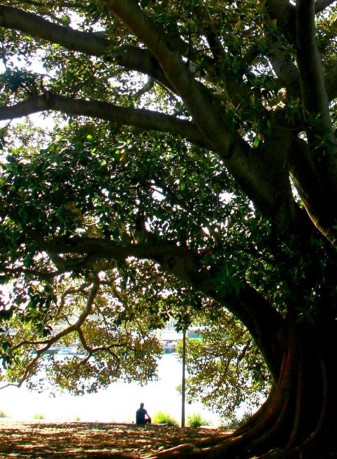Native Plant Conservation Campaign News: Amid pandemic, evidence shows that diverse native plant communities protect us from disease
April 22, 2020
Many people know of the invaluable contributions that medicinal plant species have made to the fight against cancer and other diseases (see the

brochure
Nature’s Pharmacy, Our Treasure Chest for more examples). This fact has long been used to argue for conservation of plant diversity because we do not know what the next new disease will be and what species will be able to fight it.
Now researchers are finding that living among healthy diverse native plants can also boost our general health by strenthening immune systems, lowering mortality rates, helping to protect against childhood asthma, and even substantially reducing mental illness.
Researchers have begun to use satellite and other data to quantify the “greenness” (density of plants) across a country or region. They then compare “greenness” with health data for the population by location.
A 2018
U.S. Forest Service study of nearly 50,000 New Zealand children found that those who live in neighborhoods with diverse native plants were 6-7% less likely to develop asthma than average. Conversely, less diverse nonnative vegetation was associated with a significant 3 - 4% higher risk of developing the disease. The researchers found no evidence that reduced air pollution was associated with the protective effect.
The
study was among the first to indicate that plant diversity can protect against a specific adverse health outcome.
One explanation for the findings may lie in the so called
hygiene hypothesis which holds that early exposure to diverse communities of microorganisms, such as those associated with diverse native plant communities, helps children build stronger immune systems.
In a U.S.
study following more than 100,000 women, Harvard researchers found that higher levels of greenness were associated with significantly decreased mortality. Women living in areas with the highest plant density experienced 12% lower non-accidental mortality than those living in the least “green” areas. The researchers speculated that “greenness” may reduce mortality by providing opportunities for physical activity, reducing harmful exposures (e.g. to air and water pollution), increasing social engagement, and improviing mental health.
These positive effects were found even after adjusting for other known risk factors such as socio-economic status, urbanization, and the family history of mental disorders.
So in addition to Nature Based Solutions to address problems like stronger storms and pollution, conservation and restoration of diverse local native plant communities also provide a bulwark to protect human health.
Watch this space for information on Getting Out The Vote for the crucial 2020 election!
 brochure Nature’s Pharmacy, Our Treasure Chest for more examples). This fact has long been used to argue for conservation of plant diversity because we do not know what the next new disease will be and what species will be able to fight it.
brochure Nature’s Pharmacy, Our Treasure Chest for more examples). This fact has long been used to argue for conservation of plant diversity because we do not know what the next new disease will be and what species will be able to fight it. brochure Nature’s Pharmacy, Our Treasure Chest for more examples). This fact has long been used to argue for conservation of plant diversity because we do not know what the next new disease will be and what species will be able to fight it.
brochure Nature’s Pharmacy, Our Treasure Chest for more examples). This fact has long been used to argue for conservation of plant diversity because we do not know what the next new disease will be and what species will be able to fight it.